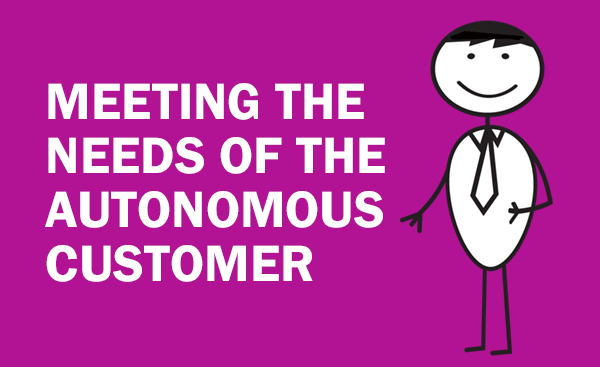Meeting the needs of the autonomous customer

The growth in online channels has dramatically changed how customers interact with brands in every sector. They now demand a better experience, across more and more channels, and are far less loyal to companies that fail to deliver what they want. As digital natives, they are empowered by the information they find online and use the internet and social media as their primary means of researching buying decisions and sharing information. Confident with technology, they are happy to use self-service systems to manage their relationships with brands.
Described as ‘autonomous customers’ by BT Global Services, these consumers rely on family, friends and social media for support in their purchasing decisions, rather than listening to brands, making them difficult to engage with. Autonomous customers are a global phenomenon, with recent research by BT finding them in Belgium, China, Germany, Indonesia, Singapore, Spain, UAE, UK and USA.
Delivering what consumers want
So how can organizations reach autonomous customers and how do they vary around the world? The BT research uncovered 5 key trends:
1. Support self-service
While autonomous consumers want to be able to do things for themselves, they also want access to live help if things go wrong. 71% of global respondents wanted to be able to be able to get support through web chat – yet Eptica’s own research with UK brands found that just 9% offered this channel.
2. Make it easy
Autonomous consumers value their time highly – they don’t want to waste it on over-complex processes and increasingly buy not on price, but on how easy you make the customer journey. 90% of Chinese respondents prefer to buy goods and services from companies that are easy to do business with, along with 84 percent of Indians, 82 percent of Americans and 73 percent of those in the UK.
3. Integrate your channels
Consumers want the ability to switch between channels during their conversations with companies. They expect to be able to pick up where they left off, without needing to repeat themselves. This requires a powerful, integrated customer service infrastructure, rather than the silo-based approach that many companies currently have.
4. Incorporate video into customer service
A picture is worth a thousand words – and a video even more. As it becomes an increasing part of their daily lives, consumers increasingly respond to the power of video. Organizations need to look at how it can help with customer service, such as by providing ‘how to’ videos to help set up products or solve common queries. The BT report also outlines the potential of video chat – although this does require a fundamentally different approach to service, along with large amounts of guaranteed bandwidth.
5. Deliver on social media
Autonomous customers get a large amount of their information from social media, meaning that it is vital to answer their queries quickly, before any issues escalate and damage brand reputation. 25% of survey respondents chose social media for customer service – though this varied dramatically between countries. 90% of Indonesians turn to Facebook for customer service answers, as did 88% of Indians, but only 53% of Britons and 45% of Germans would do the same. Again, Eptica research with UK brands found substantial differences between organizations in how they dealt with social media – some answered queries in 2 minutes, yet others failed to respond at all.
Across every sector, and around the world, customer expectations continue to rise – those brands that manage to successfully meet these needs will flourish, while others will fall by the wayside. Companies therefore need to understand what autonomous customers are looking for, ensure they are making themselves easy to do business with, and put in place an integrated approach to customer service if they want to thrive in the future.







Comments